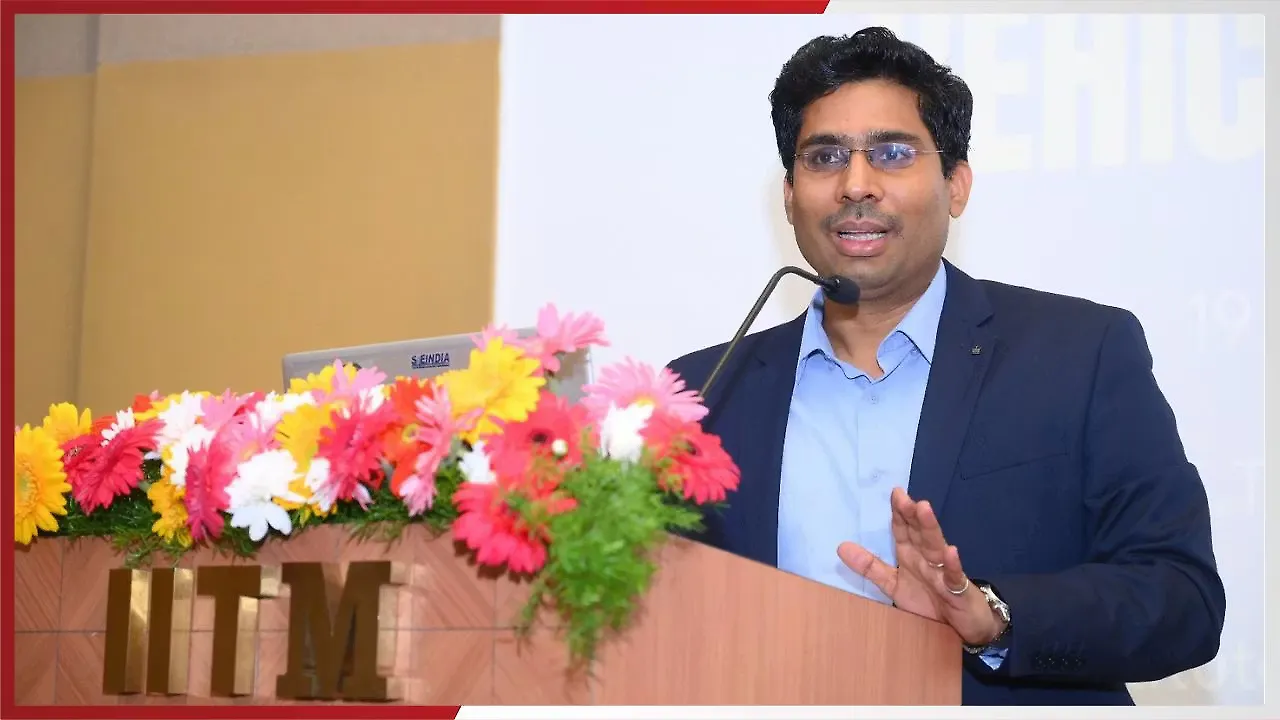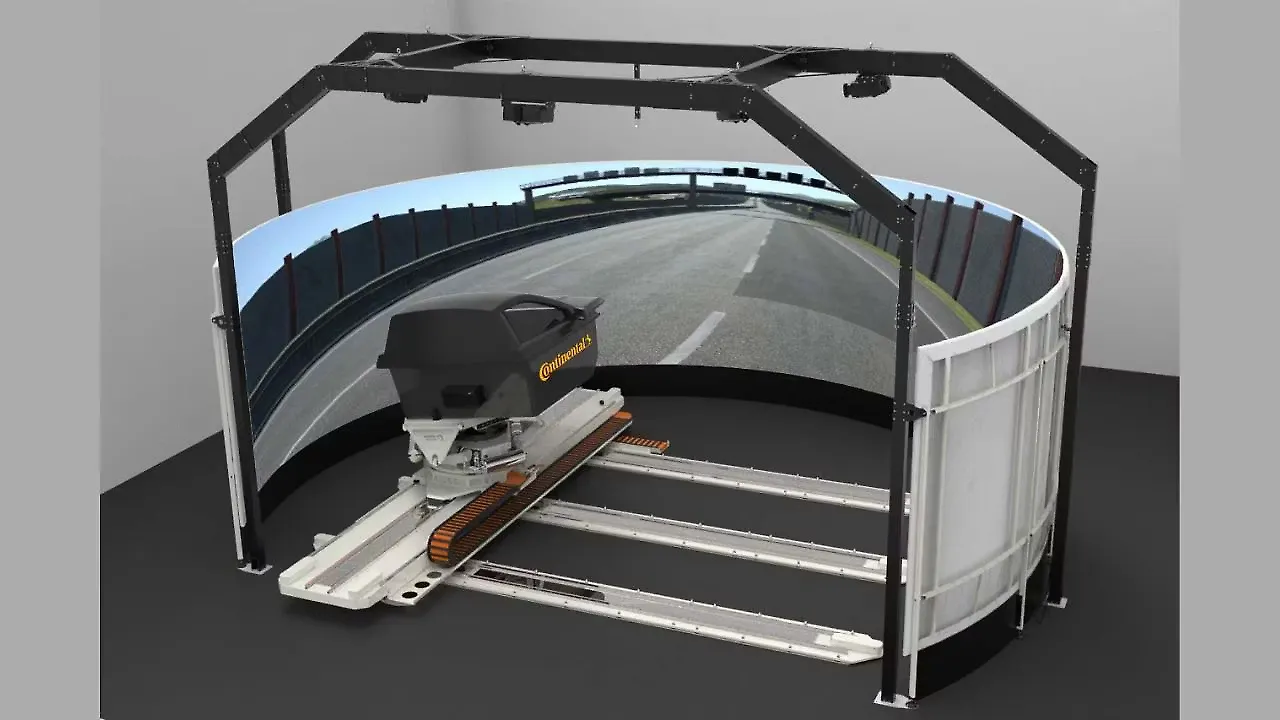
In the rapidly evolving automotive industry, creating a world-class SUV is not just about building a vehicle—it’s about mastering the delicate balance between the art and science of engineering.
Mahindra, through its series of SUVs such as the Thar (2020), XUV700 (2021), Scorpio N, and the recent Thar ROOX, has emerged as a leader in redefining what it means to create a vehicle that excels both on the road and off. “But this success didn't come overnight,” Dr Vikraman, Engineering Head - Vehicle Mechanical Systems at Mahindra & Mahindra, has said.
Delivering his keynote address at the Advanced Course on Vehicle Dynamics,’ organised by the Centre for Automotive Research (CAAR) in collaboration with SAE INDIA, Vikraman said, “it’s the result of deep exploration into vehicle dynamics, a field where every decision involves a complex interplay of physics, engineering, and customer preferences.”
Vehicle Dynamics Decoded
Decoding vehicle dynamics, he said one of the primary reasons for Mahindra’s exponential growth—from selling 12,000 vehicles a month before 2020 to nearly four times that volume today—has been its ability to crack the code of vehicle dynamics.
The essence of vehicle dynamics lies in understanding how a vehicle behaves in motion—how it handles, how it rides, and how it responds to driver inputs. Whether it’s the stability of the XUV700 on highways or the off-road prowess of the Thar, the vehicle maker has managed to perfect the handling characteristics of each of its SUVs.
But achieving this balance isn’t simply about reading textbooks on vehicle dynamics. It’s about navigating trade-offs. For instance, improving ride comfort often compromises handling, and enhancing steering response can negatively affect vehicle stability. The challenge is that as everything operates in perfect harmony, “the more profound your understanding becomes, the more you realise the depths of what remains elusive,” he said.

At Mahindra, these challenges have been overcome through a deep understanding of the science of suspension, steering geometry, and vehicle weight distribution, he mentioned.
Precision Tuning
The process of fine-tuning a vehicle’s dynamics starts with some fundamental decisions—like determining the right frequency and stiffness of the suspension. These decisions can vary significantly based on whether the vehicle prioritises ride comfort or sporty handling. For instance, the engineers at the company carefully calibrated the suspension of the Scorpio N to give it the stability of a body-on-frame SUV while delivering a smooth ride, both on-road and off.
Similarly, the choice of suspension setup—whether a double wishbone in the front or a multi-link system in the rear—depends on the vehicle's purpose. While the lightweight, low-cost cars might opt for a torsion beam rear suspension for simplicity, high-end SUVs like the XUV700 use multi-link setups that offer flexibility in tuning the vehicle's handling and comfort. It’s these precise decisions that define the driving experience, balancing comfort with the demands of handling sharp corners and rough terrain.
The Art Of Balance
Steering is another critical element in vehicle dynamics that can make or break the driving experience. A slow steering ratio provides high-speed confidence but may feel sluggish during sharp turns, while a fast steering ratio improves responsiveness but can make the vehicle feel twitchy at high speeds. To strike the right balance, Mahindra has employed technologies like variable gear ratio steering, which offers slower, more stable steering at high speeds and faster, more responsive steering during low-speed manoeuvres. This flexibility is key to making the vehicle both safe and engaging to drive.
Localising Global Standards
What sets Mahindra apart is its ability to tailor its vehicles to the unique demands of the Indian market. Unlike European and American roads, where highways are smooth and can accommodate high-speed driving, Indian roads are a mix of smooth highways and unpredictable terrain. This requires a more nuanced approach to vehicle design. Mahindra’s SUVs, built to handle the rough roads of rural India as well as urban streets, reflect this localisation. High spring rates, robust suspensions, and an emphasis on primary ride quality ensure that even on less-than-perfect roads, the vehicle remains composed and comfortable.

Technological Revolution
To meet the growing demand for diverse vehicle types, Mahindra adopted the platform approach, where multiple vehicles are built on a shared architecture. This approach allows for economies of scale and faster development times. The INGLO (a platform that can underpin models of different sizes for varying segments; t is scalable in terms of wheelbase, length and width), introduced in 2022. It also offers a range of configurations from sporty SUVs to comfortable seven-seaters.
However, Vikraman said building different vehicles on a single platform comes with its own challenges. Each vehicle must maintain its unique driving characteristics—whether sporty, comfortable, or versatile—while sharing core components. This requires careful planning and a deep understanding of how to fine-tune each vehicle’s dynamics to meet its intended purpose.
Embracing Future Technologies
As the industry moves towards electrification and autonomy, the vehicle manufacturer is not just following trends—it’s setting new benchmarks. Electric vehicles (EVs) bring their own set of dynamics challenges. While the lower centre of gravity due to battery placement improves roll stability, the increased weight at the rear axle can lead to yaw instability. The engineers have tackled these issues head-on, using advanced simulations and testing to ensure that their electric SUVs, like their internal combustion engine counterparts, remain stable and safe even at high speeds.
Semi-active suspension technology, integrated chassis control systems, and drive simulators are among the new-age processes the company has adopted to enhance vehicle performance. These technologies allow engineers to optimise the vehicle's response in real-time, adjusting damping forces based on driving conditions, and fine-tuning steering and suspension systems for the best possible balance between comfort, handling, and safety, Vikraman explained.
Continuous Journey
The journey of mastering vehicle dynamics is never-ending. Every new model brings with it new challenges, new customer expectations, and new technologies to incorporate. The company’s success in creating world-class SUVs is a testament to its ability to blend the art of vehicle dynamics with cutting-edge science, ensuring that each vehicle not only meets but exceeds the demands of the modern driver.
In this journey, the company continues to push the boundaries of what’s possible, transforming not just its vehicles, but the entire landscape of SUV engineering in India and beyond. The future, undoubtedly, holds even greater innovations, as it refines the art and science that define its world-class SUVs, Vikraman concluded.
Also Read:
Unlock India's Potential To Develop Vehicle Dynamics For The World